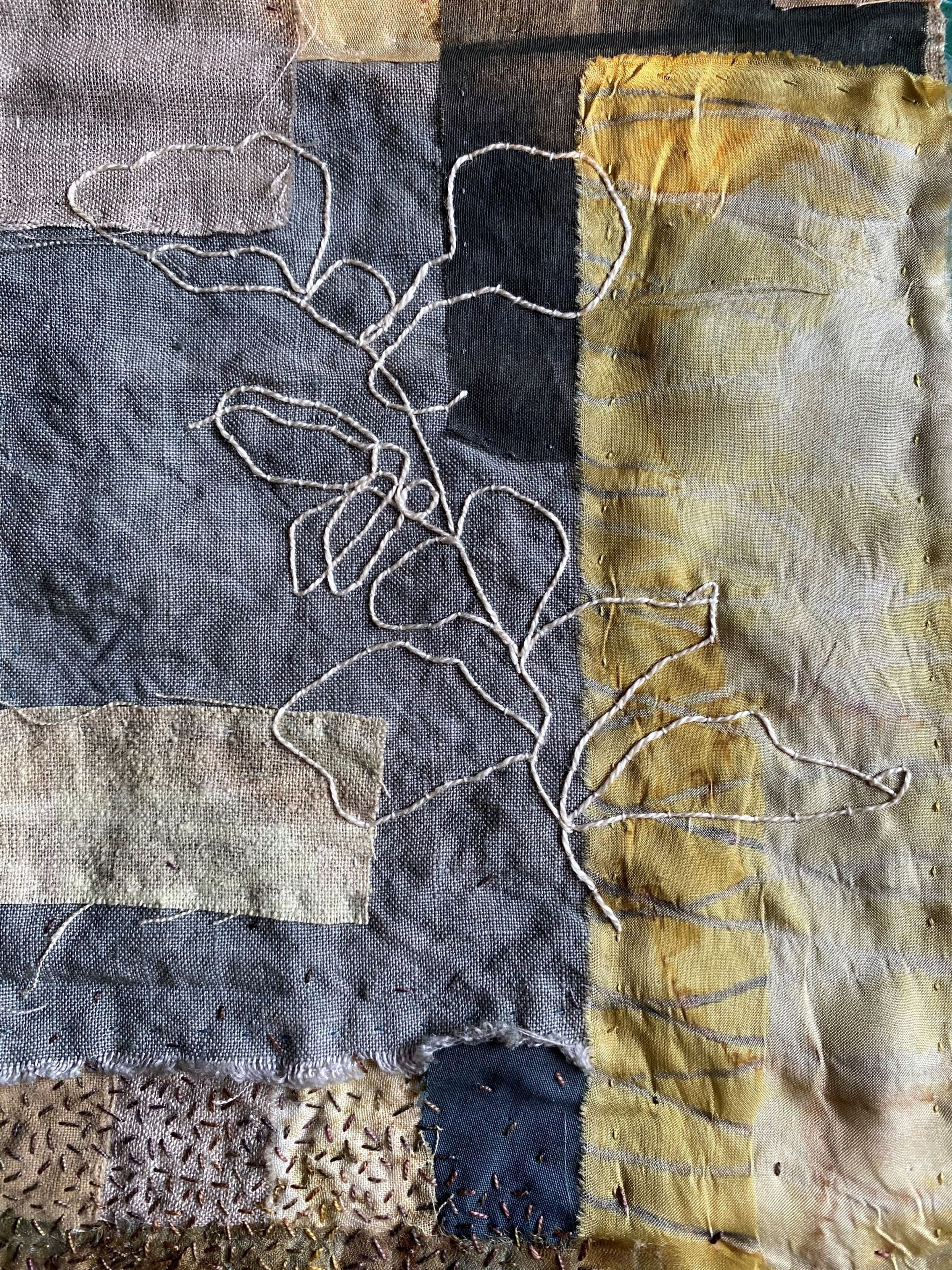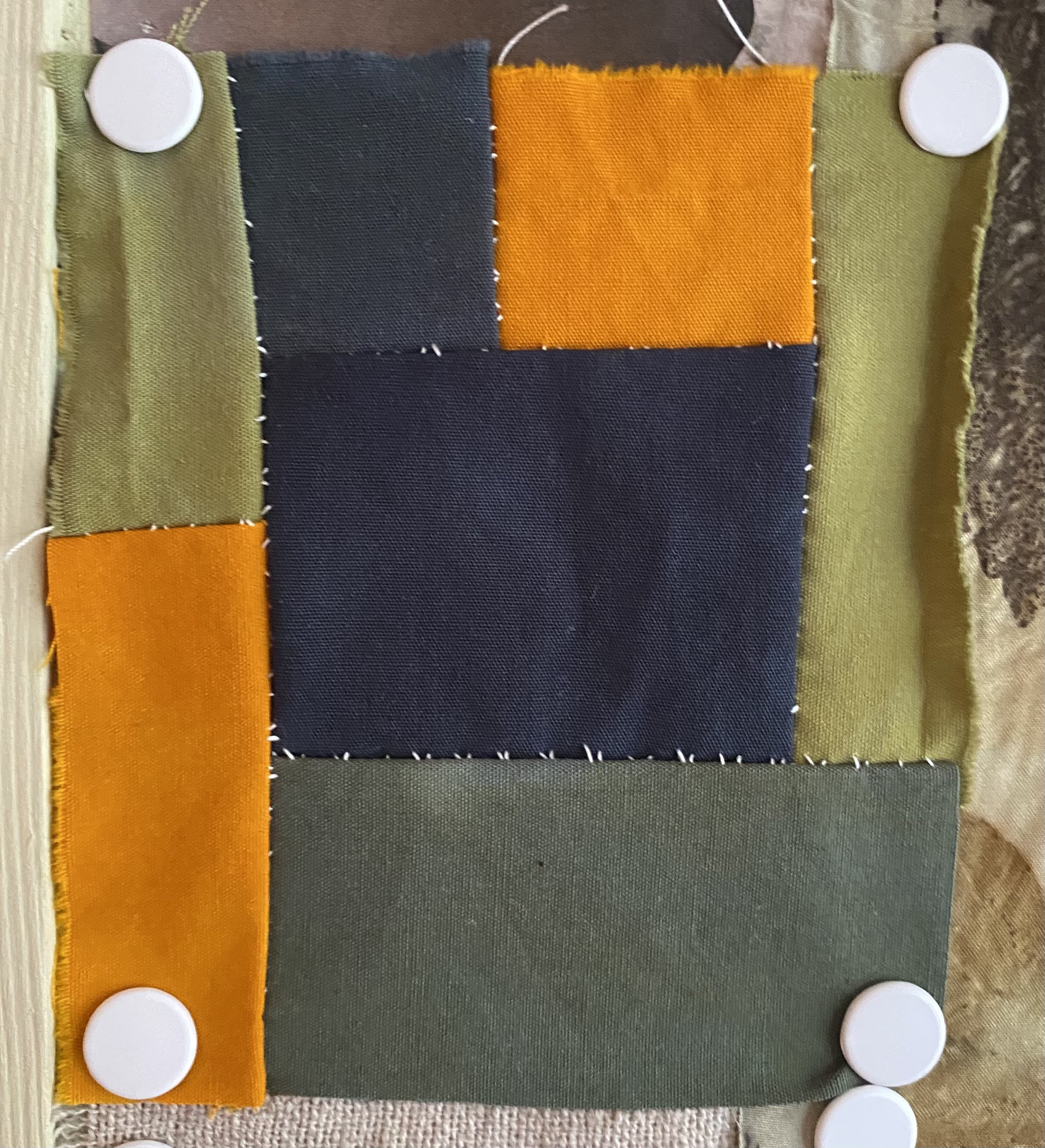Piecing and patching
I find the process of joining pieces of cloth together has a meditative effect. I enjoy playing with different compositions and experimenting with different colour combinations. There are a few patching and piecing techniques that I often return to;
Intuitive piecing
This is the least technical of the processes I like to use. I simply cut different sized pieces of fabric and play with layering and piecing them together until I find a composition that I am happy with. When I am happy with the placement of the fabrics, I stitch all the pieces down onto a backing fabric before adding embroidery or other embellishment. The piece is then ready to be made up into a quilt or journal.
Intuitively pieced background
Log cabin
The log cabin is my favourite traditional quilt block. I like the simple, repetitive construction which I think has a lot of potential for experimentation. To create a log cabin I start with a small square piece of fabric for my centre and stitch a strip of fabric to one side of it. I continue to stitch strips of fabric around the central piece, one side at a time in a clockwise direction. Traditionally, the strips are all of the same width and placed evenly around the central piece of fabric. I enjoy experimenting with strips of different thicknesses and placing them at different angles to create interesting effects. I have also tried joining different fabrics together to make the strips before creating the log cabin which creates a different effect. I usually use log cabins as part of a larger design.
Experimental log cabin sample
English paper piecing
There is something very timeless about English paper piecing. I often think about all the women before me that have sat stitching pieces of fabric around their paper templates. I particularly love working hexagons although I am keen to explore other shapes too. English paper piecing is simple to work, although it can be time consuming. I like the slow pace and repetitive motion of attaching the fabric to the paper template and then joining the shapes together before removing the paper. Again, I would use English paper piecing as a section in a larger composition.
English paper pieced hexagons
Curved piecing and narrow strips
Recently, I have been working through some of the patchwork techniques in Jean Wells’ book ‘Intuitive Color and Design’. Two of my favourites have been curved piecing and narrow strips. Jean’s approach to rulerless cutting and piecing is inspired by the Gee’s Bend quilters in America. The technique is intuitive and all the shapes are cut and pieced freehand. I have only just started experimenting with the technique but I can see that it has a lot of potential for use in my work. I would like to explore piecing organic shapes and joining quilt elements together in a more organic way.
Rulerless patchwork samples



